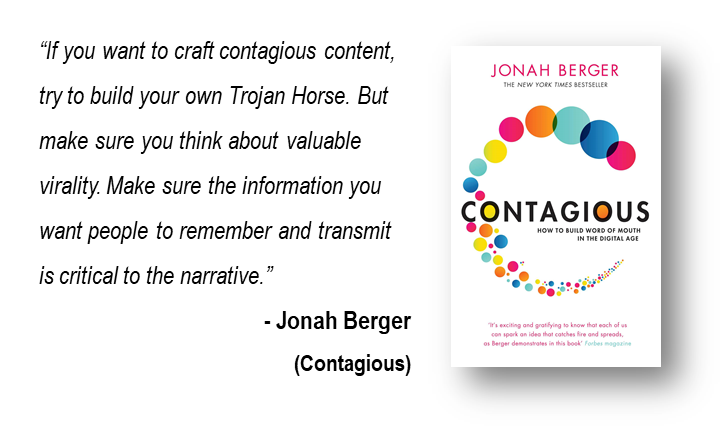In today’s world of viral marketing and creating content that catches on like wildfire, if there’s one book you must read, it is Contagious by Jonah Berger.
Berger decodes the entire concept of creating buzzworthy content beautifully and lays out for you the foundational principles of engaging and shareworthy content, while also mentioning the guardrails and shedding light on pitfalls.
After examining thousands on NYT articles, YouTube videos, spending numerous hours analysing product reviews and having face-to-face conversations to ascertain what makes things popular, Berger has distilled his knowledge into six principles of contagiousness:
- Social currency
- Triggers
- Emotion
- Public
- Practical value
- Stories
While we all know word of mouth is more effective than traditional advertising, where most of us fail is how to go about it. Is there a formula? Yes.
“Harnessing the power of word of mouth, online or offline, requires understanding why people talk and why some things get talked about and shared more than others.”
Through various examples in the book, Berger debunks the myth that contagious content can be created for only those companies that are in the showbiz or are more flashy. A product may be plain or boring but can still become the talk of the town.
I liked how Berger explains triggers and frequency. There is ‘immediate word of mouth’ and ‘ongoing word of mouth’. The trick is to identify which of these two categories you want be in and at what stage of your brand-building journey. Simply put, if you can create content that nails the triggers that will link back to your product/brand, the more you will be able to gain top of mind recall and consequently more business.
What I found particularly insightful was the 2 by 2 matrix of emotion vs arousal. To elaborate, a content piece focusing on positive emotion can lead to awe and excitement or contentment. When one is in awe, chances of shareability are much higher compared to when we are content. Similarly, a negative piece of content can cause drive one to increase shareability when the emotion being evoked is that of anger or anxiety but if it were just sadness, shareability will be subdued.
Simply put, any product or service can focus on feelings and create engaging, shareworthy content as people absorb narratives and not necessarily information. Which is why it becomes crucial that the brand or product benefit is integral to the story and deeply woven into the narrative.
Here’s a question for you: which brand do you think is more talked about — Disney World or Cheerios? Read the book to know the answer!
The views and opinions published here belong to the author and do not necessarily reflect the views and opinions of the publisher.



Be the first to comment on "How to build word of mouth in the digital age"